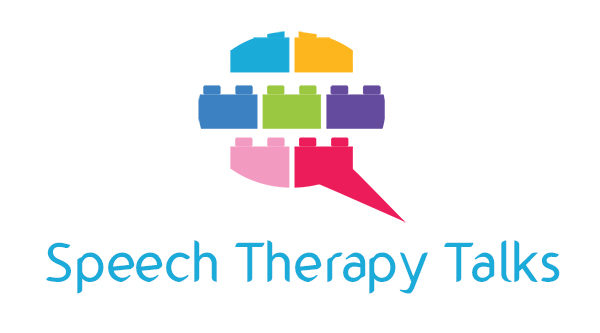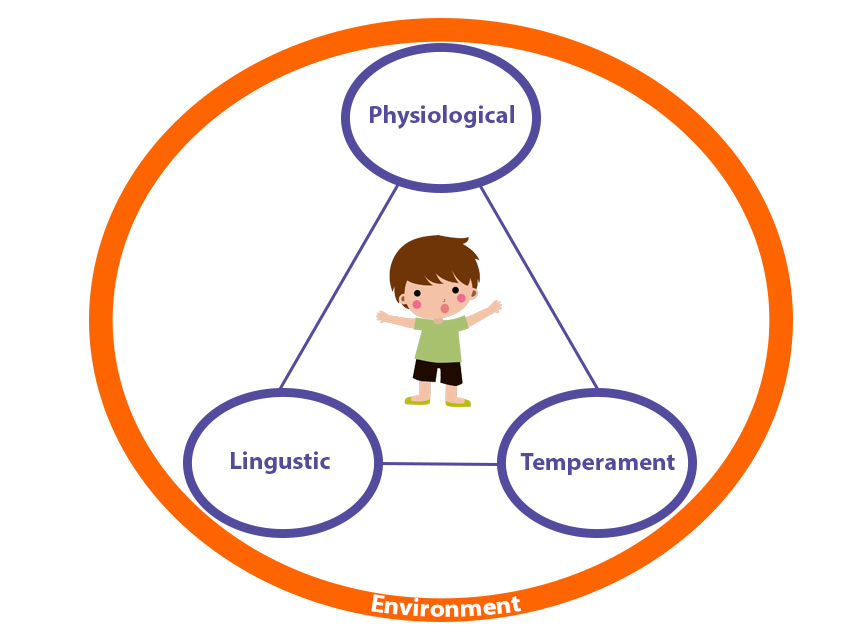-
What is Stammering?
-
Stammering is the disruption of the flow and timing of speech. This can be heard as one or more of the following:
Stammering can be accompanied by secondary behaviours such as facial grimaces, head/body movements, physical tension, avoidance of sounds/words/situations or decreased overall communication.[i]
-
-
What Causes Stammering?
-
Emotional problems and parenting style do not cause stammering.[ii] It is an involuntary neuromotor disruption in the timing of the typically synchronised and sequential motor movements required for speech.
There is not one definite cause of stammering but the research base suggests that there is a strong genetic component in persistent stammerers. Below are factors that contribute to the emergence of stammer:
-
Physiological:
Recent evidence highlights the importance of genetics.[iii] Research suggests that 69% of stammerers reported a family history.[iv] There are known structural and functional neurological differences in children who stammer.[v]Linguistic:
Children with either delayed or advanced language skills are known to be more vulnerable to stammering[vi] As well as those with mismatches in skills (e.g. a good vocabulary but poorer understanding).Temperament:
There is a known link between emotionally reactive and sensitive temperaments in stammerers.[vii]Environmental:
These do not cause stammer but may exacerbate it in a child whose fluency is vulnerable. Environmental factors include communication partners, pace of life, emotional and/or social pressures.
-
What We Do to Help?
-
Our ultimate goal of therapy for individuals who stammer is to ensure they remain a confident communicator. For those who have already lost confidence we do our upmost best to support them in regaining this at their own pace.
We carry out a detailed case history to understand the individual we are working with and their situation as stammering can be a different experience for different people. We also understand that stammering can vary across an individual’s life in accordance to their awareness and the environment. For example, a school aged child may develop awareness and this may impact on their stammer. Transitions and/or stressful periods such as exam times may also exacerbate stammer.
We are skilled with a range of therapeutic interventions to help individuals with stammer. Much of these follow the Social Model which looks at stammering as something that can be managed by education, mindset, environmental measures and acceptance.
We are also familiar with a range of direct techniques. Some individuals may find these useful. However, research suggests that “each technique is one in a myriad of options in a field in which there is no clear best evidence-based way” [viii] There is also no evidence that changing breathing patterns actually helps people who stutter in the long term.[ix] Although some individuals find it useful to use breathing for relaxation prior to a speaking situation that may cause anxiety.
What Can You Do to Help a Stammerer?
- Show them you’re listening – remain attentive
- Wait until they have finished
- Do not speak for them
Words of A Stammerer
“Occasionally, a stutterer will turn up to therapy in a mindset in which they are not able to engage in therapy around their stutter; the session is not lost. You can still listen to the person in front of you and help them a little on their life journey.”
Patrick Campbell, Co-Editor, Stammering Pride and Prejudice
-
[i] Coleman, C. (2013).SIGnatures: widening the treatment circle. Involving parents enhances treatment for children who stutter. So why not include the child’s siblings, friends, teachers and other communication partners? The ASHA Leader, 18, 54-56.
[ii] RCSLT www.rcslt.org
[iii] Kraft, S.J. & Yairi, E. (2012).Genetic bases of stuttering: the state of the art, 2011. Folia Phoniatrica et Logopaedica, 64, 34-47.
[iv] Bloodstein, O. & Bernstein Ratner, N. (2008). A handbook on stuttering (6th Ed). Delmar Learning, Clifton Park, NY. Chang, S. E. (2014). Research Updates in Neuroimaging Studies of Children who Stutter. Seminars in Speech and Language, 35(2),67-79.
[v]Chang, S.O., Garnett, E., Etchell, A. & Chow, H.M. (2018) Functional and Neuroanatomical Bases of Developmental Stuttering: Current Insights. The Neuroscientist. 25(6)566-582
[vi] Watkins K. E. et al, (2007). Structural and functional abnormalities of the motor system in developmental stuttering. Brain 131(1), 50–59
[vii] Jones, R.M. et al, (2014). Emotional reactivity and regulation associated with fluent and stuttered utterances of preschool-age children who stutter. Journal of Communication Disorders, 48, 38-51.
[viii] Baxter, S. et al (2016) Non-pharmacological treatments for stuttering in children and adults: a systematic review and evaluation of clinical effectiveness, and exploration of barriers to successful outcomes. Health Technology Assessment (20.2)
[ix] Professor J. Scott Yaruss (2021) It’s (almost) NEVER breathing in stuttering therapy.



